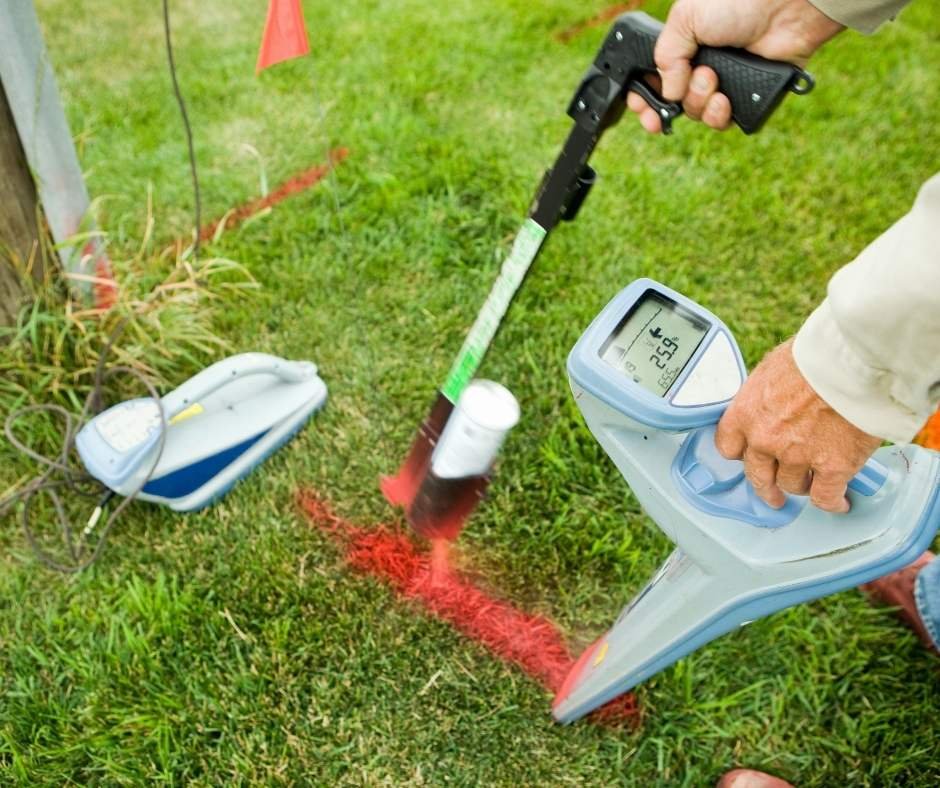How to Find Buried Sprinkler Heads
There’s nothing worse than discovering that some of the heads of your sprinkler system broke during the winter months and are now refusing to rise when your system turns on.
Usually, these sprinkler heads can be difficult to locate or dig up.
When two or more sprinkler heads start to malfunction, it may lead to dry, brown spots in some portion of your lawn, ruining your yard’s overall aesthetic.
If ever you find yourself in this situation, worry not, as successfully digging sprinkler lines isn’t as difficult as you think. With the right equipment and a few steps, you’ll be on your way to finding buried sprinkler heads.
Tips to Find Sprinkler Heads
Generally, depending on the method you’re planning to use, finding sprinkler heads mainly involves using a measuring tape, shovel, metal detector, flathead screwdriver, and some small flags. Here are some tips for finding buried sprinkler heads.
Check the Irrigation System Map
It’s highly likely that the professionals who installed your sprinkler system have left you with a system map. This map shows the position of every sprinkler head and supply line. If it’s still in your possession, use the map as a reference to identify any sprinkler heads that didn’t pop up above the ground.
If you’re having trouble, make use of the small flags so you can easily match the sprinkler head on your lawn with those in the system map.
Use Water
It may seem odd to use water to find buried sprinkler heads, but this method is easiest if you’re trying to find sprinkler heads that are covered in mud or grass. If your sprinkler heads weren’t used for a couple of weeks, are already covered with grass, and are hard to find, perform the following steps:
Switch off all valves of functioning sprinkler heads. If the sprinkler heads don’t have any divot, turn the valves by twisting clockwise. If there’s a divot, use a screwdriver to tighten the valves.
Turn the sprinkler system on. Make sure all the sprinkler heads are functional.
Wait for a couple of minutes.
After waiting, check for the wet areas on your lawn. Since the lost sprinkle head is covered yet the water is running, the water flow will be under the grass or mud. So, water might be leaking anywhere on your lawn.
Determine any flooded route. Then, track along the water line so you can find the missing sprinkler head.
Measure Between Two Active Sprinkler Heads
This method involves using a tape measure to measure the distance between any active sprinklers. If you don’t want to get wet, keep the location of one functioning sprinkler head in mind. Then, turn off the water and start moving down in a straight line towards the next functioning sprinkler.
By knowing the exact distance between two sprinkler heads, you can determine any missing or buried sprinkler heads.
As an additional tip, you can use a small, bright flag to mark any sprinkler heads that you’ve already measured.
Detect Blind Spots
Turn your entire sprinkler system on. After the water is running, identify any blind spots on your lawn. Take note that sprinkler heads are often equidistant from each other, and most will be tucked in the edges and corners of your lawn’s layout.
Once you’ve noticed an area that isn’t receiving sufficient water, you’ll know which sprinkler heads are malfunctioning and where to look to dig up the buried sprinkler head.
Use a Metal Detector
Metal detectors are a good sprinkler head detector, but before scanning your entire lawn with a metal detector, ensure that the metal detector is functional. You can do so by scanning it over a sprinkler head that’s functional. Also, to get an accurate reading, make sure to adjust the sensitivity settings.
Once your metal detector is able to identify a functioning sprinkler head, you can then start scanning your lawn for those that are buried or stuck.
How to Avoid Sprinkler Lines When Digging
Unlike an agricultural irrigation system, sprinkler systems require periodic maintenance for them to function properly. In some cases, the valve box is going to be tough and difficult to find. When a replacement, a tune-up or maintenance is due, most homeowners will find it challenging to locate the malfunctioning sprinkler valve, especially if it’s already covered with grass and mud.
The solution is to start digging for the valve. Unfortunately, when homeowners without any experience start digging for the valve, there’s a significant chance that they may hit the sprinkler lines. A damaged sprinkler line isn’t only going to be a waste of water, but it may lead to flooding as well.
Using a Sprinkler Head Detector
To make sure you avoid the sprinkler lines when digging, it’s best to use a sprinkler valve locator, which may be available in your local hardware stores.
Once the batteries are placed, turn on the power. Similar to an ordinary metal detector, also perform the test to assess if the equipment is functional. If so, the next thing to keep in mind is to refrain from touching the red and black clips.
To identify areas you shouldn’t dig into, turn both transmitter and receiver on, plug in the headphones, point the receiver to the ground, then start sweeping the spring valve locator from side to side.
Normally, you’ll hear a beeping sound, but if you’re directly over the sprinkler lines, you won’t be hearing much –– this is known as the “null” principle. After the null, keep going until you reach the valve. You should start to notice a louder beeping sound, which signifies the valve. You can then use a small flag for reference.
Call a Professional for Additional Help
Despite being a relatively easy chore, some homeowners may not have the luxury of time to locate any buried sprinkler heads. If so, then consider calling a professional to help find your buried sprinkler heads.




